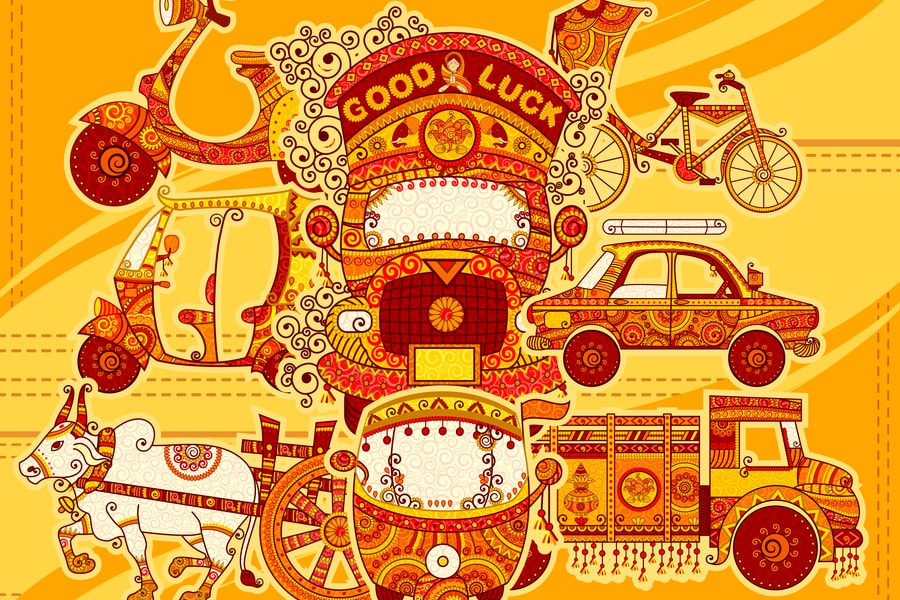“The demand for designers across all fields is at an all-time high—from product and packaging design to user interface and experience (UI/UX) design. We are seeing traditional Indian brands now embracing the edge that a good design team or agency brings on board," says Siddharth Devnani, co-founder and director at marketing agency SoCheers.
According to Devnani, the growth in the design sector is fueled by the growing number of startups in the country. “From organisations like Zomato and Paytm doing this on digital platforms to likes of The Souled Store and Bewakoof doing this with their products, we are truly in an era that"s getting designed for India rather than imported in, or worse, copied from foreign brands," he says.
A recent report by the Confederation of Indian Industry (CII) says the design industry in India was worth Rs 18,332 crore in 2020. While the number includes a wide variety of designs, product design is one of the most significant aspects of the growing design story in India.
What is product design?
Consumer tech brands are focused on paying close attention to the user journey on their app or their website, and design is usually the deciding factor for the consumer.
“The gap between a current product to its future vision is usually bridged via a robust product roadmap," says Saksham Mendiratta, co-founder and business growth lead at Light Out Studios.
“When you have a clear direction of what you want but want someone to help structure your customer experience is where we come in," he says.
“We are generally summoned when the brand has data and metrics available at their disposal and all they are looking for is to better their acquisition and retention numbers via product redesign or enhancement," adds Mendiratta whose company works with a host of brands like Kapiva, CRED, Cure.fit, ICICI Prudential, The Souled Store, Charcoal Eats, Hard Rock Cafe, and others.
Explaining their contribution in enhancing user experience Mendiratta brings up the example of one of their clients—Cure.fit.
“When Cure.fit came to us, they came with a single challenge: they had 3 business lines of nutrition, fitness, and wellness on the same application. Given that working out at home was catching up with the onset of the work from home environment, they wanted a seamless experience across all of these business lines, within the app," he says.
Lightsout team collaborated with Curefit’s design team to implement their new design language across the app.
“We worked on art direction, standardising design systems and then scaling them across the entire application, whilst maintaining individual personas of each independent business line," he explains.
Design is a differentiator
Design is one of the most impactful differentiators for brands says Shriya Malpani, head of Design at
Cure.fit. According to her, a lot of customer-facing brands in the same space compete with each other for market share for them, a differentiated design has started playing a key role.
“Good product design is about pushing people into doing things which are not in their comfort zone or the things that they probably earlier thought is not required. A good product design is about shaping behaviour and that is what we do at Cult. We want to make fitness contagious, create inspiration but at the same time not be intimidating," Malpani says.
Hardik Pandya, vice president, design at Unacademy agrees. He says, “Design is no longer solely a value-enhancer at this point, design is table stakes. Good design builds loyalty."
The India story of product design
Clearly, unlike popular belief, product design is not just about how the product looks. Product design in India presently is more about enhancing functionality keeping in mind the emerging markets and new customer profiles.
Tejas Bhatt, a founder at digital design studio 3 Sided Coin, says earlier product design was mostly about dealing with users who have a fair knowledge of the medium and are regular internet users. But as they started moving from working with only global clients to those in India, product design started having a wider horizon, Bhatt says.
“With the explosion of the user base in India, product design starts from the research stage and is not just about finishing up with a product that looks nice. We are now designing products for brands that want to sell to the Bharat market, to a market that is outside of Tier 1 cities and to a much larger customer base that may be using the internet from just their phone," Bhatt explains.
Wallet Buddy, FroogiPedia, Fisdom, Urban Company and so on are some of 3 Sided Coin’s clients.
Products built in India used to have a reputation for barely attempting to achieve an acceptable quality bar but that is no longer true, says Pandya.
“Many products compete these days on design and design is seen as a clear moat. An institution cannot internalise design ‘later’—it needs to be integrated from day one. This is why you see the majority of startups focus on design hiring and good design practice so early on in their lifecycle. Design has earned its rightful place in the value chain and has started to deliver clear results for the products that pay great attention to detail," he adds.
Pandya"s prediction is that the value of design will continue to rise.
According to him, great designers will be in high demand and well run and ideologically aligned design teams will become a moat for companies to use to accelerate their growth and market share.

 A recent report by the Confederation of Indian Industry (CII) says the design industry in India was worth Rs 18,332 crore in 2020. Image: Shutterstock[br]
A recent report by the Confederation of Indian Industry (CII) says the design industry in India was worth Rs 18,332 crore in 2020. Image: Shutterstock[br]